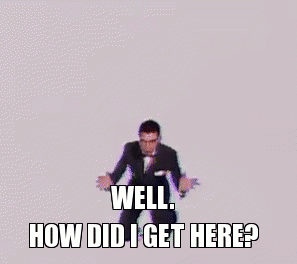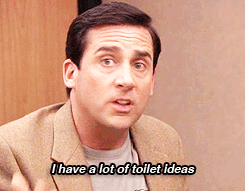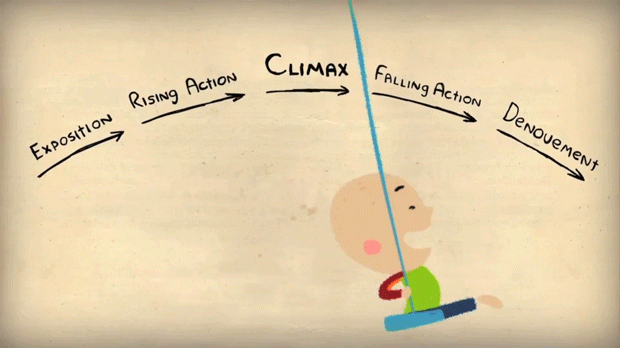I've had a weird career. I attended Mizzou to score a bachelor's of journalism (minor: music history), which I wanted to turn into a reporting gig for Rolling Stone, Spin, and so on. LOL @ me because I graduated in the winter of 2007, so I hungrily accepted the first offer of full-time work that crossed my desk: editorial assistant at what is now Horoscope.com. In the ensuing ~10 years, I…
- edited online class text for a for-profit university
- maintained a news and reviews website for EMS workers
- wrote swear-laden articles for niche blogs
- tried to become a Twitter celebrity
In other words, I was going for an English-language jill-of-all-trades thing. Somehow, I parlayed this random experience into my current writing role in UX at an established company. I'm incredibly stoked about the past year and a half. Yet self-doubt often creeps in:
Having zero experience in user experience before this job, I started thinking that there must be a common thread, a set of integral characteristics, abilities, and skills that helps one succeed in a role like this. Do you have what it takes? Do I? Let's find out.
Creativity
Kind of a no-brainer, right? If you're an idea-generation machine, great, but the creativity you need in UX is really just a heady mix of resourcefulness and ingenuity. When you see a problem and three potential ways to solve it, do you zoom in on the options given to you and refine, or can you take a step back and pretend you're a customer? Will your brain churn out a fourth solution, a fifth? Try it sometime. It's addicting. Also keep in mind that there are no bad ideas in brainstorming. When you're writing, jot down or type literally everything that comes into your head — AND DON'T DELETE IT — even if it's “fdjsklfdjskfjklahfd wtf am i doing send help. You might surprise yourself with one or two workable options after pumping out 50 ideas for a headline. And don't edit any of this stuff till the next day, if possible.
Open-mindedness
I know, I know, it's hard to let go of the temptation to fix all of your errors and typos in the moment and diagram every sentence you see, thanks to our sixth-grade English teachers. Everybody loves being an expert on appositives, coordinating vs. subordinating conjunctions, and Oxford commas (don't @ me). Bundle your anal-retentiveness up in a sack, y'all, and throw that shit out the window. In UX, it's awesome if you can punctuate a headline properly, but the most important concern is whether the user understands the message.
Empathy
Which brings us to a core skill, a major buzzword among UX thought leaders — what empathy really is, how to develop it, and whether we care about it too much. Let's think about this concept in our personal lives. Say your friend is complaining about feeling underappreciated at work. You feel that fire in your belly, that tug where your heart used to be. You've been there, wondering why incompetent coworkers get that promotion, that nonstop praise for taking undeserved credit, the schedule that adapts to their daily obligations while you're expected to be an ass in a chair for eight solid hours a day. The key? You know exactly how this feels. That's empathy, and you have it, even if you haven't yet talked to a single user stepping through your UI.
Design thinking
Great news: Empathy unlocks your persuasive abilities. Now you know what a user needs to make it to the end of your flow. Clueless about CTAs, step-flows, or interstitial modals? You can think like a designer anyway. You don't have to be a conspiracy theorist. All you have to do is draw your user a map… figuratively, considering the only thing I can draw is horses. When you're in those design conversations, you understand the problems content can and cannot solve. Organize your user's journey into a beginning, middle, and end, just like in that term paper you wrote 20 years ago. Especially in a content-first approach, you'll inform the interaction and visual design — without even trying!
Esprit de corps
I hate saying the words “team player, so I used the French. You're gonna want to get comfortable with the folks on your team — designers, product managers, other writers. None of you is alone in talking to your user, so when you're coming up with concepts, do it together. Even if you hated group projects in school and blast “Independent Women, Pt. I while you're getting ready every morning, playing well with others can be fun. Good user experience doesn't exist in a vacuum, and all of the parts need to come together in a cohesive whole so that the user doesn't slip through the cracks. Besides, science probably says that brainstorming and riffing with your teammates foster feelings of well-being.
Love of writing
This feels like a given, but I occasionally encounter a UX writer who just kind of fell into it. “It's a job, they'll say. To which I respond (in my head), “Find another. You can have the above traits in spades, but if you don't like what you're doing, you won't want to apply any of them to your work. And you're not going to feel rewarded when you find the perfect turn of phrase that gets a 32% increase in conversion or whatever. Your day-to-day might be bogged down with meetings, product roadmaps, and useless feedback, but if you can enjoy putting together a sentence, content design is right for you.
Everything else can be learned. Designers, fellow content folks, product managers, and your other colleagues will be happy to teach you, if your mind is willing. But I believe these are the basics you need to start a career in UX writing. I'm basing all this on my own observations and extensive soul-searching, though. Leave a comment to tell me what I missed.








Top comments (0)